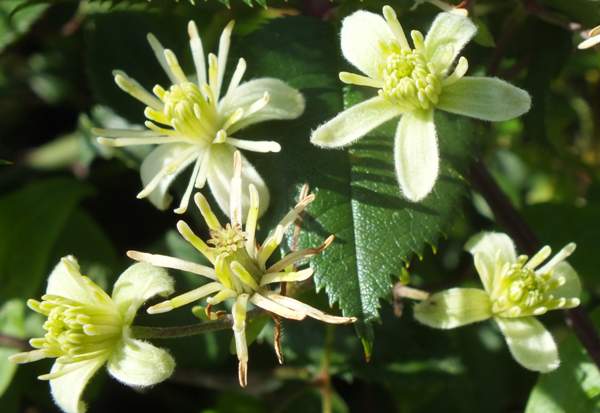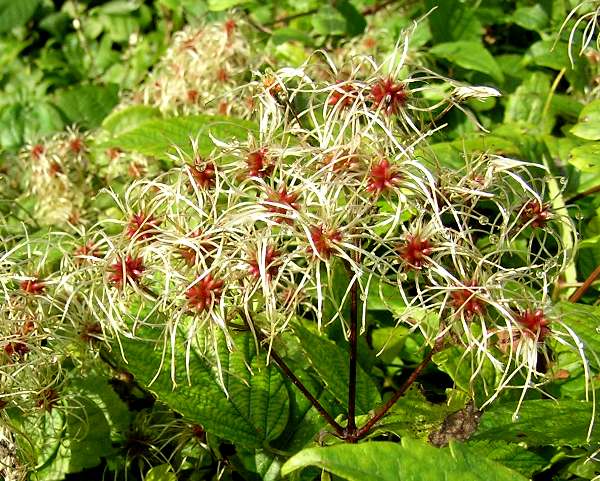Clematis vitalba - Old Man's Beard
Phylum: Magnoliophyta - Class: Equisetopsida - Order: Ranunculales - Family: Ranunculaceae

Another common name for this wild flower is Traveller's Joy.
Description
Pinnate compound leaves each comprising three to five eliptical, toothed leaflets grow in an opposite arrangement. White flowers with conspicuous stamens form dense clusters. Individual flowers are typically 2cm across and have four tepals (in fact they are sepals, not petals).
Blooming times
Old Man's Beard is a perennial clambering plant, producing pale creamy-yellow flowers in July and August and greyish-white fluffy seedheads that persist through the winter months.

The fruiting heads, which appear in autumn, are a mass of white fluffy seeds - hence the common name Old Man's Beard.

Distribution
Traveller's Joy is common throughout southern England and in Ireland but does not venture very far into Scotland. It can also be found throughout Wales.
Habitat
You will find this vine-like plant growing in hedges and on scrubby woodland. It is particularly common in limestone and chalk areas including sand dunes, but we have seen this plant in slightly acidic habitats, too.
Sue Parker's latest ebook is a revised and enlarged second edition of the acclaimed Wildflowers in the Algarve - an introductory guide. Full details here...
Buy it for just £3.95 on Amazon...
Please Help Us: If you have found this information interesting and useful, please consider helping to keep First Nature online by making a small donation towards the web hosting and internet costs.
Any donations over and above the essential running costs will help support the conservation work of Plantlife, the Rivers Trust and charitable botanic gardens - as do author royalties and publisher proceeds from books by Pat and Sue.



